Take Your Photos to the Next Level
This is a quick overview of 5 ways to blend photos to create incredible landscape photos. This covers the most common situations you will find yourself in as a landscape or cityscape photographer: shooting into the sun, blending photos taken at different times of day, blending moving objects between photos, double-processing the same photo and blending both versions together, and blending multiple skies into one. This tutorial is also available in text form on www.lapseoftheshutter.com, along with other free goodies for Lightroom and Photoshop that you can freely download.
Let’s start with shooting into the sun. When you are on location and shooting into the sun, it helps to take bracketed exposures. Although modern cameras can capture a huge amount of dynamic range, they still struggle with very bright light sources like the sun. Often I find that the sun will create lens flare as the light bounces around inside the lens, so for your foreground exposure, it’s a good idea to block the sun using you finger or something similar. I first process all my photos in Lightroom, using the Lightroom Develop System, freely available from www.lapseoftheshutter.com. These two are the results of that processing, now opened in Photoshop. Unfortunately, you can’t blend photos in Lightroom yet, but it is nonetheless a very simple process to blend photos like these two in Photoshop, using luminosity masks. I simply open both photos into the same workspace in Photoshop, making sure the sky exposure is on top, then click on the channels tab and control-click on the thumbnail for the RGB channel. This selects the brightest pixels in the photo, in this case the sun and sky. You can see that some of the sky at the top where it is darker has been cut off, but this won’t be a problem. In this case, you could actually do a good job of selecting the sky by hand, as the border between sky and ground is distinct, but this technique is handy to know for more complex situations, as we will see later. Moving back to the layers tab, you simple have to make sure the sky layer is selected, then add a layer mask. The luminosity mask will be automatically applied. This isn’t quite good enough, so I will use a large soft paint brush set to between 10-20% opacity, to feather the transition between sky and land. And that gives us the final photo.
Time blending is very similar to blending exposures taken into the sun, but instead of their only being seconds or fractions of a second between exposures, there might be minutes or hours. Here’s two photos of Santorini, already processed in Lightroon using the Lightroom Develop System, and taken from the same spot on the same evening. I like the sky in the sunset photo, and the streetlights in the blue hour photo, so how to blend them? In this case, I will use luminosity masks again, but with an individual colour channel. Think of this as a refined luminosity mask. We will follow the same procedure as for the previous photo, but this time we will control-click on the red channel, to select the brighest red pixels in the photo. This is a very effective way of selecting streetlights in night time and blue hour photos, as the streetlights are usually the only things in a photo that are both bright, and contain large amounts of red. In this case though, the selection does contain part of the sky, which we can fix later. As before, we return to the layers tab, make sure the blue hour photo is selected and add the luminosity mask as a layer mask. It doesn’t look like it, but we are nearly finished. Simply make sure the layer is selected by clicking on the layer thumbnail, then use the quick selection tool to select the sky. Then, select the layer mask by clicking on it’s thumbnail, and use the paint brush with colour set to black to paint over the sky. You don’t have to worry about accuracy, as the selection you made of the sky will constrain the brush only to that area. Cancelling the selection with conrol-d, I will finish up by making a few minor additional changes to the mask, to leave us with a stormy sunset of Santorini, with streetlights switched on. If you want to go even further that this, it’s possible to combine colour channel luminosity masks with blending modes for an even more subtle blend. Take a look at the video of sunset in Yokohama, Japan, for more.
But what about if you have objects that move between exposures, that you want all contained in one photo? I had this problem in Prague, where as the sun rose and the nice light faded, flocks of birds began circling overhead and flying around the bridge. I pushed the ISO up on my camera so I could get a fast shutter speed, and took several photos of these birds. Now I need to blend them into my long exposure of the same location. First, load them into the same workspace, with the birds on top, then simply use the magic wand tool to select the birds. You need to make sure that the sample all layers box is unticked, and you may need to increase the tolerance if the birds are not well separated from the background, or are particularly small. In this case, a tolerance of 70 seems to do the trick. Holding down shift as you paint over the birds adds to the selection. Now, add a layer mask to automatically blend the selection you have made. If the object doesn’t quite seem to fit, you can try changing blending modes of the bird layer. Darken often works well.
Sometimes, you take a photo that doesn’t quite work on its own. The secret is to double-process it, changing colour and tone and then blending that second version into the first. Here are two versions of a blue hour over the Vatican in Rome. The first looks good, but the streetlights are flat, so I processed the second version with the aim of improving the streetlights and reflections. There’s no need to use luminosity masks if you are blending double-processed photos, and they often will not work in any case. It’s usually simple to hand draw a layer mask using a large, soft brush, set to between 10-20% opacity. Here’s a very quickly drawn mask. The differences are subtle, but the result is much closer to the final photo that I wanted to create, and this gives much more to work with for further processing.
Often, skies as seen from cities can be flat and boring, and it can be difficult to capture any stars, like in this photo of Kyoto. If you are lucky enough to visit somewhere where there is minimal light pollution, like this desert in the far west of Rajastan, India, you can photograph the stars, but you miss out on the city. So why not combine them? Firstly you need to prepare both photos in Lightroom. The Lightroom Develop System, freely available from www.lapseoftheshutter.com, has an isolate starry sky preset that is designed to prepare photos of the stars for blending by increasing their dynamic range. So open both photos into Photoshop, with the stars on top. You may want to switch its visibilty off and select the base layer, so that you can then use the magic wand tool to select the dull flat sky that you want to replace. Add this selection as a layer mask to the stars layer, switch on its visibility, and change its blending mode to lumonisity. It’s that simple to add a starry sky.
You can do the same with dull, overcast skies, replacing them with powerful sunsets. This photo of the forbidden city in Beijing was taken at sunrise, although you wouldn’t know it thanks to the smog. But I like the photo, and you don’t see many photos of the water frozen like this. I tried two or three times to get a decent sky here, but it wasn’t happening, so I’ve had to add it myself. This sunset was taken in Scotland, and is one of many sky photos that I have in my library. These photos were actually shot at different focal lengths, 17 versus 24 mm. Usually I would try to match focal lengths between photos for blending, but in this case the difference is minimal, and what difference there is actually gives the clouds greater prominence and power, which works for this photo. So open both photos into Photoshop, with the sky layer on top, then turn the sky opacity down to 50%, and use the move tool to match up the horizons between the photos. Put the opacity back to 100%, and double-click on the right hand edge of the sky layer to open the layer styles box. Change the blend mode to mulitply, and using the underlying layer blend if box, move the tabs on the left over to the right until the dull sky begins to appear. If you hold down alt while sliding the tabs, you can feather the effect. That’s the sky blended. If you want to make the effect more realistic, you can copy the sky layer, rotate in vertically and move it to bottom of the photo to provide a reflection in the ice. You might want to stretch it a bit to replicate the lens distortion that should be present, and obviously reduce the opacity to a very low number.
This tutorial is only part of the totally free landscapes masterclass series, available at www.lapseoftheshutter.com. You can also download, again for free, the Lightroom Develop System, the Photoshop Colour Control ActionPack, and the Photoshop Landscape Colour Grades.
Subscribe to the mailing list and get a free download link right now
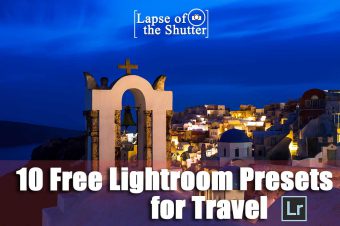
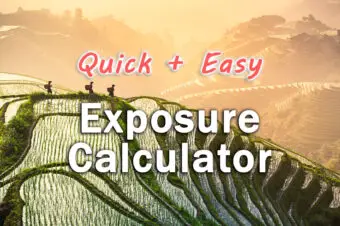
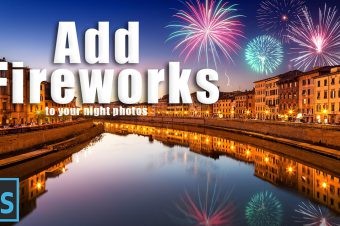
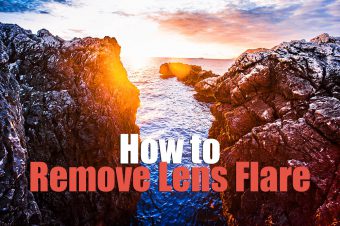
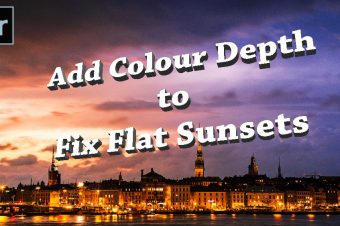
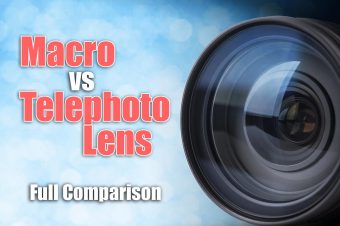
Leave a Reply